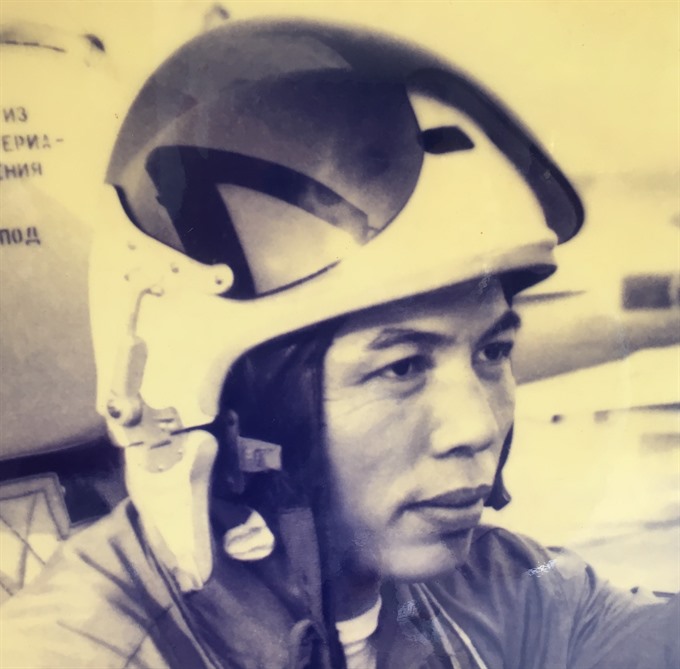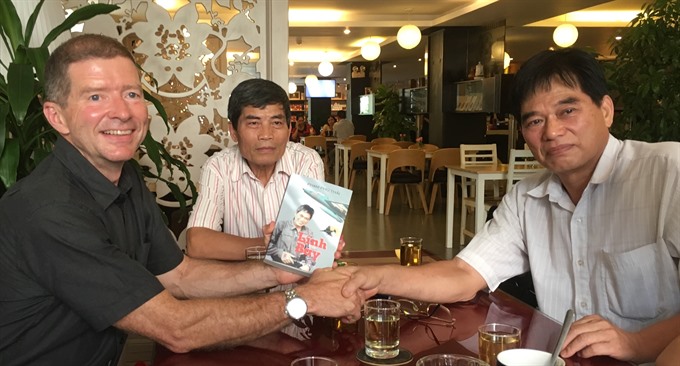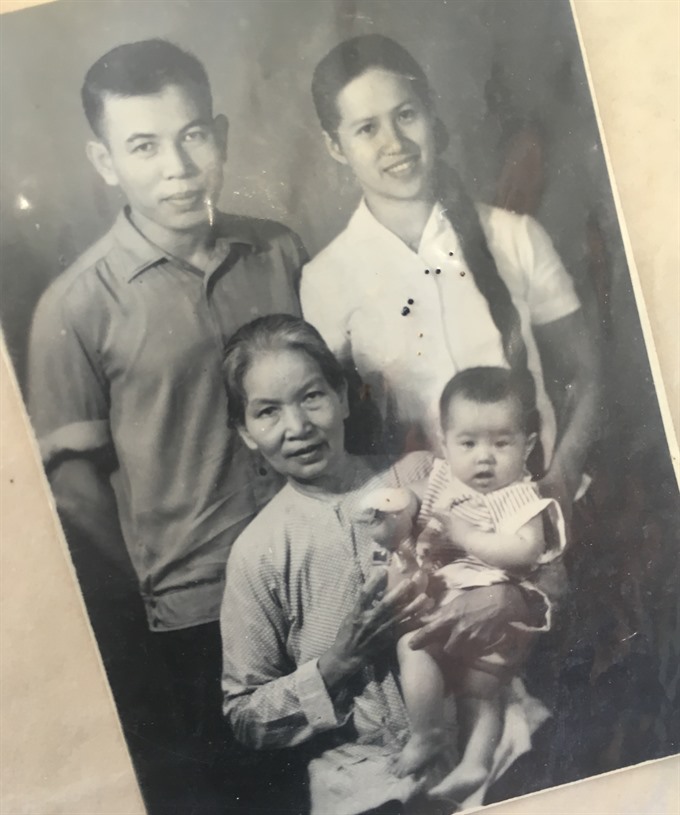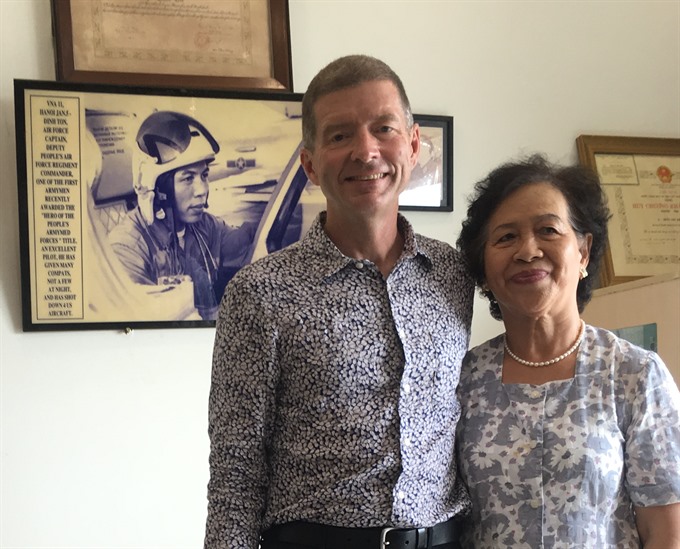 |
| Dinh Ton. |
Viet Nam News
By Thomas Eugene Wilber
It began in Tho Xuan District, Thanh Hoa Province, Viet Nam
At about 4pm local time on Sunday, the sixteenth day of June 1968, air force Captain Dinh Ton and his wingman, Captain Nguyen Tien Sam, taxied their MiG-21single seat fighter jets to the northwest end of Tho Xuan airbase and lined up to take off. Completing final checks and accelerating to a normal launch transition, they climbed to about 300 metres altitude, banking to the right and heading south at a speed of 800 kilometres per hour.
Pilots Ton and Sam were assigned to the 921st Fighter Regiment flying from Tho Xuan. Today was Sam’s first combat flight, and his job was to protect flight leader Ton. For Ton, every combat flight was important, as expectations for him were high.
About Dinh Ton
Dinh Ton had returned to Viet Nam only four months earlier from three years of advanced fighter training in the Soviet Union. He was older and more experienced than some of his classmates.
Born in 1936, Ton misrepresented his age to join the army in 1951 to fight the French. After the defeat of the French at Dien Bien Phu, he began air force training in 1955, eventually flying the Il-2 cargo plane.
In 1962, Ton got a taste for air combat maneuvering. While returning on a supply delivery flight he encountered a US jet fighter. Ton increased power and pulled his unarmed cargo plane into a climbing turn, coming back in behind the US plane. If his Il-2 were armed, Ton was in perfect position to score a victory.
Ton was selected for training on the MiG-21 in 1965. At age 29, he was one of the oldest pilots in his class, and a top student. When he returned on 20 February 1968, expectations were high.
Ton was ready. He had early successes in 1968: three aircraft shot down in April, May and June. But today, on 16 June 1968, Ton was intently focused on the present mission.
In the air over Nghe An on 16 June 1968
As Ton and Sam continued their flight southward passing over Nghia Dan at 1500 metre altitude, ground control radar operators observed US Navy fighter jets from the sea flying west across Nghe An Province about 40 kilometres ahead of Ton and Sam. They alerted pilot Ton, who would soon seize the opportunity. About 12km ahead, Ton saw a fighter jet turning away to the south and then begin to turn east, back toward the sea. Ton closed in from behind, and, at 1,500m, launched an air-to-air missile, disabling the American plane, which descended rapidly in flames. Only four months after returning from flight training in the Soviet Union, Capt Dinh Ton had downed his fourth US aircraft on 16 June 1968.
Fifty years have passed. My connection to this event is this: my father, Gene Wilber, was the pilot of the plane that Capt Ton shot down that day. A few minutes later Gene Wilber would be captured on the ground in Nghe An and travel to Ha Noi to prison. During his detention he would make statements against the American war, later returning to his home and family after the Paris Peace Accords were signed in 1973. Finally, after a long family life including 20 grandchildren and 10 great grandchildren, he would die of cancer at his home in July 2015. In 2014 before he became ill, I began taking trips to Viet Nam to learn more.
Some things I have learned from the people of Viet Nam
In the process of my several trips, I met retired Viet Nam People’s Air Force Colonel Nguyen Van Suu. I had hoped to find Ton, but Suu, who had served in the same squadron with Sr Col Ton in 1980, told me that Ton had developed cancer and died at an early age.
 |
| Wilber (left), with Mr. Suu, receiving book from Mr. Thai (right). |
 |
| Dinh Ton and Tran Dien Hong and family. |
 |
| Wilber with Mrs. Hong in HCM City. — VNS Photos Thomas Wilber |
Col Suu continued to help me. In March 2016 he made arrangements with retired Lt Gen Phạm Phu Thai, a younger classmate of Ton in flight training, to brief me on the air combat records from 16 June 1968. I was honoured that he invited Tran Thi Dien Hong, the widow of Sr Col Ton, to share in the meeting at the VPAF Museum conference room in Ha Noi.
The personal story that Hong shared captivated me. She told about aspects of their life that I would not have considered.
Hong and Ton grew up in the same village. When he returned on military leave visiting his home village, he asked young Hong to marry him. They became engaged, but were separated by their responsibilities, including his years of advanced MiG-21 training in the Soviet Union. She was a doctor for the war wounded, while he was a pilot.
In June 1968, issuing a lighthearted challenge, Ton’s commanding officer told him that when he would shoot down another American plane, he could take leave and go to marry his fiance. A few days later Ton downed my father’s plane. The next month, on 27 July, Ton and Hong were married.
Their life together during the American war years would not be easy. They had endured separation during their long engagement. Finding time to be together after marriage was also difficult, as they both had significant wartime responsibilities. In 1969 they had their first child, a girl. She would die at the young age of four years.
They also had a son, and another daughter after the war.
With the help of grandparents, Hong and Ton maintained their young family during the war years. Hong would ride a bicycle from Thanh Hoa, sometimes only for an overnight visit. Ton would sometimes fly to Ha Noi to spend only 15 minutes with the children. They persevered, and for his remaining years they had a wonderful life together.
With gratitude
I learned many of these life details from my visit to Hong’s home in Ho Chi Minh City in August 2016. Hong keeps these most important aspects alive in her memories. She demonstrates resilience, grace, kindness and a spirit of reconciliation. I will always appreciate that she shared her memories of her husband Ton so that I may know these human perspectives in this 50-year-old story that connects us.
Tom Wilber researches documentation regarding US prisoners held in the Democratic Republic of Viet Nam from 1964 until 1973. He has made dozens of trips to Viet Nam locating sites and conducting interviews. Wilber was a visiting lecturer at Ha Noi University in the undergraduate course on American Foreign Policy in 2018. He assists Hoa Lo Prison Museum with exhibits, and has facilitated the return of memorabilia from former US prisoners to Hoa Lo’s permanent collection for use in future displays.
OVietnam